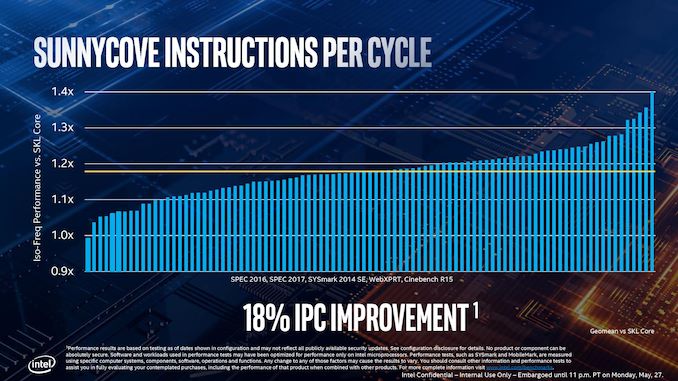Intel, AMD, and Nvidia have one thing in common; they usually pick a "best case scenario" when displaying their new tech, Nvidia cherry-picked games when showing off Turing, AMD did it with Radeon VII with very few games and now with Zen 2 with Cinebench and Blender. The benchmarks might not be fake, but they are usually a little on the optimistic side.
So when Intel claims an 18% "IPC" gain for Ice Lake (-U/-Y), I will take it with a grain of salt. But still, Sunny Cove is a major architectural overhaul, and even if the real gain is more like ~12-15%, it's still very good and would be comparable to Sandy Bridge -> Skylake.
But remember, this is just the low-power variant. I'm more interested to see the improvements for Ice Lake-SP, which have a different cache configuration, memory controller and various core features.
 Game changer in high end gaming laptops?
Game changer in high end gaming laptops?  Yet it heats to 100 degrees or can't boost to their given speed as there is only 15W TDP.
Yet it heats to 100 degrees or can't boost to their given speed as there is only 15W TDP.



